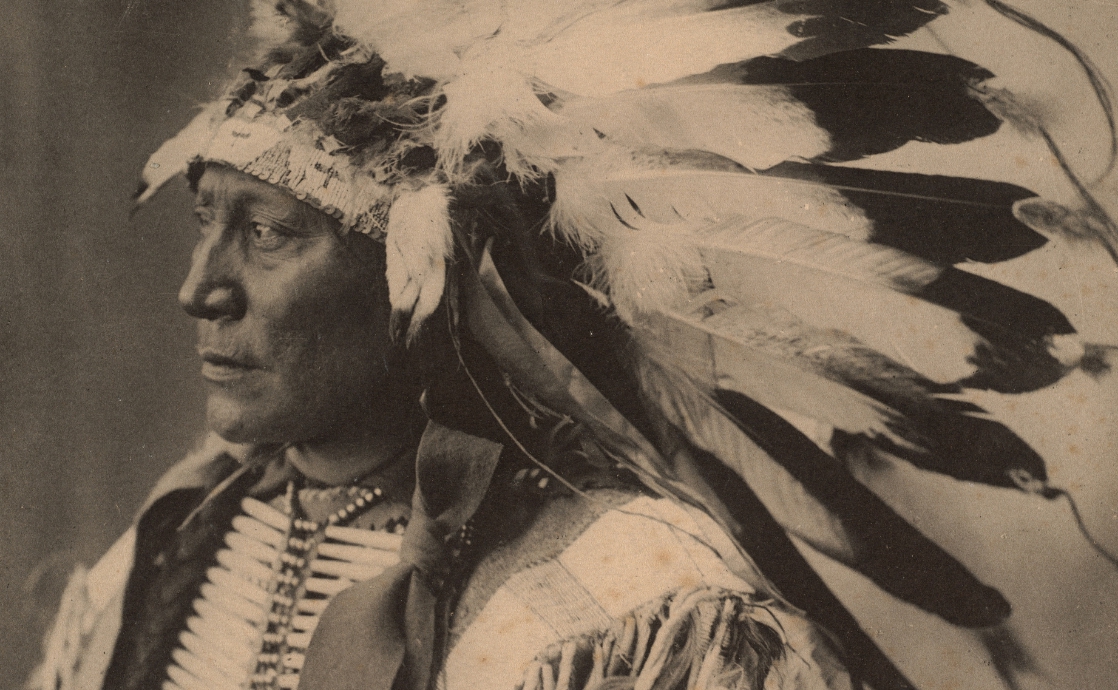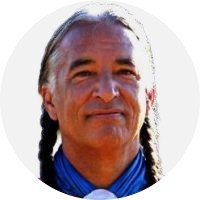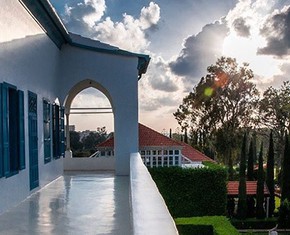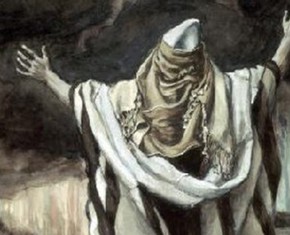The views expressed in our content reflect individual perspectives and do not represent the authoritative views of the Baha'i Faith.
Science has long attempted to trace the initial migrations and discover the origins of the native and Indigenous peoples of the American continents. How did those Indigenous Americans first arrive?
Most traditional anthropology classes teach the “Bering Strait land bridge theory.” It says that thirteen thousand years ago, when the planet’s most recent Ice Age began to ease, receding glaciers created an inland corridor (“Beringia”) that connected Siberia to the Americas – and people from northeast Asia crossed that bridge and thereby populated “the new world.” That generally-accepted scientific theory holds that all Indigenous Americans can trace their ancestry back to these initial Asian migrants.
But, of course, the standard theory is still only a theory, and many tribes dispute it. Also, some contemporary scientists have questioned the land bridge theory as the sole explanation, since it came from early anthropologists who surmised that those they called “primitives” did not have sufficient knowledge or sophistication to sail the oceans.
Recently, one scientist — an anthropological geneticist from the University of Kansas named Jennifer Raff – has persuasively questioned the accuracy of the land bridge theory as the only possible route to the American continents. In her just-released book, Origin: A Genetic History of the Americas, Professor Raff provides a wealth of new data from archaeology, genetics, linguistics, and different ways of knowing – including Indigenous oral and spiritual traditions – to explain how and when people first reached the Americas.
RELATED: The Search for Truth: Finding Marumda
Raff’s book uses newly-available scientific and archeological evidence, like the recently-discovered fossilized human footprints in White Sands, New Mexico – which are 22,000 years old – to discredit some aspects of the land bridge theory. She persuasively argues that the ancestors of America’s first peoples came to the continents in multiple ways, by land and by sea.
How does this new evidence comport with the Baha’i teachings, especially Abdu’l-Baha’s writings, which say that all societies had their own holy messengers? In this episode of Indigenous Messengers of God, we’ll examine that question.
Q: Kevin, one of the stated objections to the idea that God sent Indigenous messengers to the Americas, which I have encountered from time to time, cites statements in the Baha’i writings to the effect that all of the prophets of God appeared in the East. Here’s one example that quotes Abdu’l-Baha, from Shoghi Effendi’s World Order of Baha’u’llah:
“In the books of the Prophets,” He again asserts, “certain glad-tidings are recorded which are absolutely true and free from doubt. The East hath ever been the dawning-place of the Sun of Truth. In the East all the Prophets of God have appeared … The West hath acquired illumination from the East but in some respects the reflection of the light hath been greater in the Occident. This is specially true of Christianity. Jesus Christ appeared in Palestine and His teachings were founded in that country. Although the doors of the Kingdom were first opened in that land and the bestowals of God were spread broadcast from its center, the people of the West have embraced and promulgated Christianity more fully than the people of the East.”
So how do you respond to this particular statement by Abdu’l-Baha, when quoted in such a way as to exclude the possibility of Indigenous messengers of God sent to the Americas? Is it clear that Abdu’l-Baha was speaking to a Christian audience here, and that, in connecting with his audience, he was merely re-stating their fundamental assumption in which all the prophets of God – primarily referring, of course, to the Abrahamic tradition – came from the East?
Also, do you agree that this makes it all the more necessary to read the passage above together with Abdu’l-Baha’s Tablet to Amir Khan, which we have discussed at length, given its singular importance in authoritatively affirming the past existence of Indigenous messengers of God sent to the Americas?
A: Yes, I agree 100 per cent! Let me add that, from my limited perspective, the early-20th-century Western audience that Abdu’l-Baha addressed was at the initial stage of awakening from centuries of brutal slavery and genocide. For most, Jim Crow segregation was acceptable and any concept of “indigeneity” – the fact of originating or occurring naturally in a particular place – could be conveniently purged from the consciousness. Spiritual indigeneity, at that time, was an inconvenient truth. As the Baha’i Exemplar, Abdu’l-Baha focused on themes we could build subsequent spiritual understandings on. Amir Khan was unencumbered by the galling weight of U.S. history, and made this most natural of queries to Abdu’l-Baha.
Q: Excellent point! To a certain degree, the teachings set forth in the Baha’i writings were, in a way, somewhat limited in scope by the nature of the questions being asked. Your point about Amir Khan is a brilliant insight. He asked Abdu’l-Baha a natural question that it had not occurred to Americans to ask. Would you please comment on this passage from the Tablet to Amir Khan?:
In ancient times the people of America were, through their northern regions, close to Asia, that is, separated from Asia by a strait. For this reason, it hath been said that crossing had occurred. There are other signs which indicate communication.
In Part 12 of this series (“Manifest Destiny and Native American Religion”), the late Paula Bidwell (1953–2016) — God bless her pure soul — expressed some initial reservations, until she came to terms with it.
As Abdu’l-Baha noted, “… it hath been said that crossing had occurred.” The Bering Strait “land bridge” theory goes back to the Spanish missionary, Fray Jose de Acosta, who advanced this idea back in 1590. Fast-forward to an important article in Indian Country Today, “The Death of the Bering Strait Theory,” in which the author cites articles from the journals Nature and The Proceedings of the National Academy of Sciences.
So this hotly contested debate continues unabated. Perhaps there were multiple migrations, as Professor Raff says in her new book. So what is there to preclude Indigenous Americans (at least some, if not most) from having their ancient roots sunk in “Turtle Island” and deep in the soil the rest of the Western Hemisphere? After all, Kevin, you had earlier pointed me to this 2018 article, “Humans Populated Americas 130,000 Years Ago? Mastodon Findings Spark Controversy.”
RELATED: Were the Prophets Refugees and Migrants?
So how best to reconcile these ancient land and migratory connections with present-day Indigenous claims to being the original peoples of the Americas, together with their respective Indigenous Messengers of God having established the sacred foundations of their various civilizations?
A: More than 30 years ago, on a visit to the Museum of the Southern Plains in Anadarko, Oklahoma, I was fortunate to view an amazing exhibit on the origins of the local Indigenous Nations: Kiowa, Comanche, Apache, Caddo, Delaware, Wichita, etc. According to their various creation narratives, some had descended from the heavens, others had arisen from the Earth, still others had migrated throughout the Earth, yet other peoples emerged from the light.
I agree with you, Chris, when you say that “Cosmogony recapitulates sociology,” in that these origin stories have more to do with how Indigenous societies came to inherit the sacred moral, ethical, social, and spiritual values they live by today. All emerged into this realm at the bidding of God, the Great Spirit. To be a Baha’i is to celebrate the ancestral inspiration that has guided us to this day of spiritual fulfillment, when we can recognize and arise to enter the realm of light together.
Q: What I hear you saying, Kevin, is that whatever the ancient geographic connections between East and West may have been in bygone times, what we need today are connections between East and West that unite, rather than divide. This includes respecting and honoring Indigenous contributions to the world — past, present, and future.
A. Absolutely – as White Buffalo Calf Woman taught: Mitákuye oyás’iŋ (“All are related”). This well known and much used utterance is attributed to White Buffalo Calf Woman. The people continue to say it because she enjoined it upon us to affirm our relationship with her, and through her we become related to Tȟuŋkášila (“Grandfather”) — our Creator, the One Who authorized her and all of the Holy Ones to appear — and become related to all of creation as well.

















Comments
Sign in or create an account
Continue with Googleor